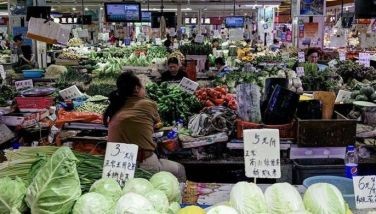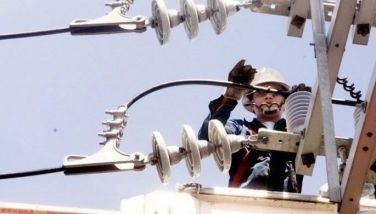Getting more Japanese investments – Part II

Two sets of information give us a clue that we still have to improve Japanese perceptions about the policy environment and the growth prospects in our country in order to significantly raise investments from that country.
The first is the actual amount of Japanese private investment flows from 2015 to 2021 in comparison with similar flows to our ASEAN neighbors.
The second is the latest (2021) survey of Japanese foreign direct investments sponsored by the Japan Bank for International Cooperation (JBIC). The answers to the survey of Japanese overseas investors and their overall ranking of investment countries and regions provide a clue as to how they regard us compared to other investment destinations.
Japanese private FDIs to the Philippines. From 2014 to 2021, the Philippines received foreign investments from Japan totaling to Y11,613 billion. Of the amount, 58 percent of investments were in manufacturing and the rest to non-manufacturing activities. (The value of 100 million yen in today’s US dollar is $743,600.)
Using the Philippines as basis of comparison, total FDIs from Japan to Thailand for the same period was 3.2 times; Indonesia, received 2.8 times; to Vietnam 1.7 times; and Malaysia1.4 times.
We get more qualitative information if we break down investments between manufacturing and non-manufacturing. Thailand, Indonesia, and Vietnam during this period were hosts to bigger investment volumes in industry compared to the Philippines.
Thailand had 3.6 times the manufacturing investments to the Philippines and 2.6 times in non-manufacturing. Indonesia’s manufacturing investment is 1.8 times that of the Philippines, but investments in non-manufacturing were even much larger (4.3 times). Vietnam, which is a relative newcomer in terms of industrial investments from Japan, has received almost twice the investments in manufacturing and exactly twice in non-manufacturing during the same period.
It must be emphasized that the data above do not include the years since 1990s when massive investment flows from Japan started to move to South East Asia. Also, the foreign investment flows to China and, in later years, to India constitute the largest Japanese investments overseas to specific countries.
JBIC 2021 survey of Japanese companies. The survey questionnaire was sent to 965 companies and received a response from 515, for a 53 percent response rate. The survey is an annual effort since 1989 to enable the Japanese government to understand the “current situation, challenges, and outlook for overseas operations ” of private overseas Japanese investments.
The 2021 survey was distinctive in that, aside from usual themes of the survey questions, the survey also tried to extract information on such new subjects as “medium term prospects for supply chains,” “initiatives for digital transformation,” and initiatives for decarbonization.”
Limitation in space allows only a summary of the most important factors that impressed me as I studied the report of the survey.
First information of importance is the nature of respondent companies that replied to the survey. Among responding companies with “overseas affiliates for production,” the Philippines ranks only 12th in number of Japanese companies responding. The first six countries on this list are: China, Thailand, US, Indonesia, India and Vietnam. Of 15 countries listed in terms of Japanese “affiliates for sales,” the Philippines is not listed.
Second is the view of respondent Japanese companies in terms of “the most promising countries” in the “medium term” (which is defined as the “next three years”). Out of 20 countries listed, the Philippines is ranked 7th. This is of course encouraging, for it is in the first 10 countries. However, the six countries ranked above the Philippines are: China (1st), India (2nd), US (3rd), Vietnam (4th), Thailand (5th), and Indonesia (6th). This listing of preference was the same for the survey of 2020.
Elaborating further on the medium term, the Philippines is 8th for Japanese investments in “automobiles”; 7th for in “electrical equipment and electronics”; and 8th for “general machinery.” The Philippines is not listed in “chemicals.” All the six countries mentioned in the previous paragraphs are considered for these investment areas.
The third most revealing information on the investment perceptions about the Philippines can be gleaned from the specific assessment of “promising reasons” as opposed to “issues.” Japanese investors ranked the main favorable reasons: future growth potential of the local market; current size of the local market; inexpensive labor; good for diversification to other countries; supply base for assemblers; and base of export to Japan.
While most of the Asian countries listed above the Philippines mention all the same favorable factors, an important distinction is that they are all listed as “base for export to third countries”. In other words, they appear to be lower cost producers that enable them to export competitively to third countries. Note that the Philippines is viewed as a base for export to Japan. It is not considered as “base for export to third countries”.
Another point to consider is that most of the “issues” or problems encountered by Japanese investments in the Philippines are the same problems that are also listed for the ASEAN countries. In the case of Thailand, Indonesia and Vietnam, a common problem among them in 2021 are rising labor costs and the scarcity of management, technical, and engineering staff. These scarcities do not appear to be a problem yet in the Philippines. An issue listed for the Philippines is “underdeveloped infrastructure,” something not listed for the other ASEAN countries.
Opportunities for the Philippines. The message that these findings tell us is that there is still much work to be done for Philippine policy-makers to change perceptions of foreign investors in our favor.
In my own assessment, the problem of creating major removal of restrictions from foreign direct investments would do much to improve our reputation as host to more foreign capital. Open the economy more widely and we will boost FDIs certainly, not only for Japanese, but to more foreign investments.
This means that the efforts of Congress to deal with the amendments to the restrictive economic provisions to foreign capital should continue.
But I believe that President Marcos needs to undertake leadership on this front instead of being passive to it. Or else, a lot of his efforts to make the Philippines as a destination for more FDIs will not achieve as much results.
For archives of previous Crossroads essays, go to: https://www.philstar.com/authors/1336383/gerardo-p-sicat. Visit this site for more information, feedback and commentary: http://econ.upd.edu.ph/gpsicat/
- Latest
- Trending

























